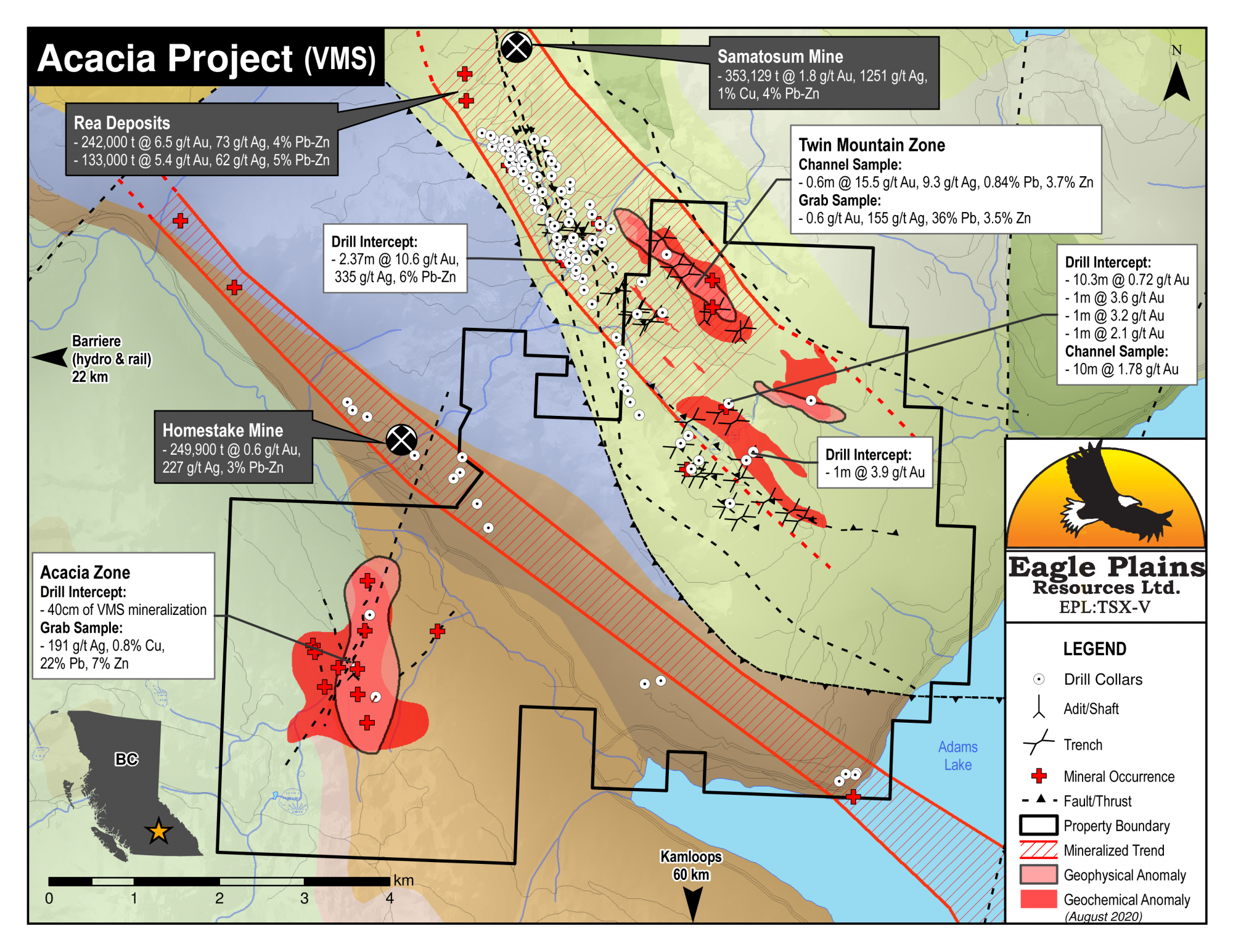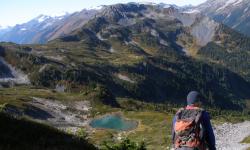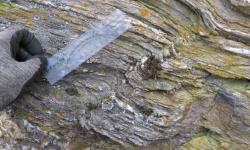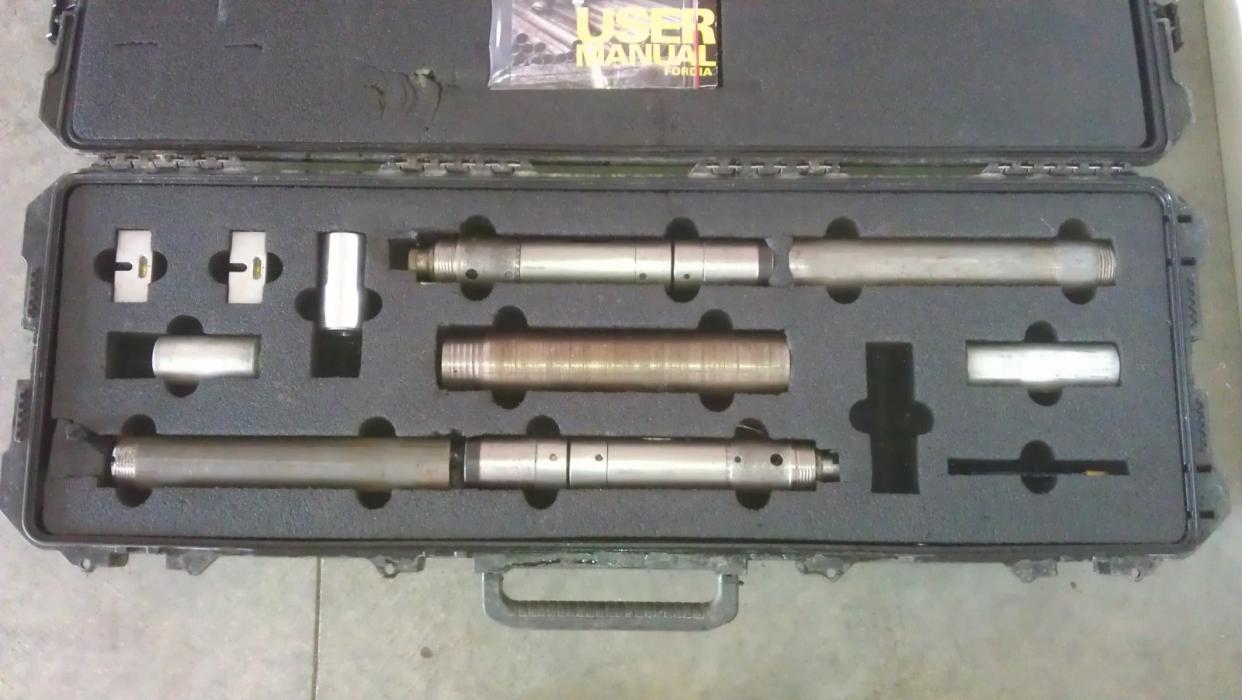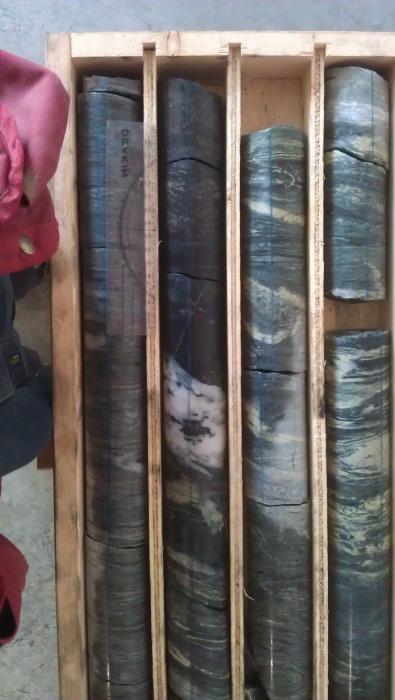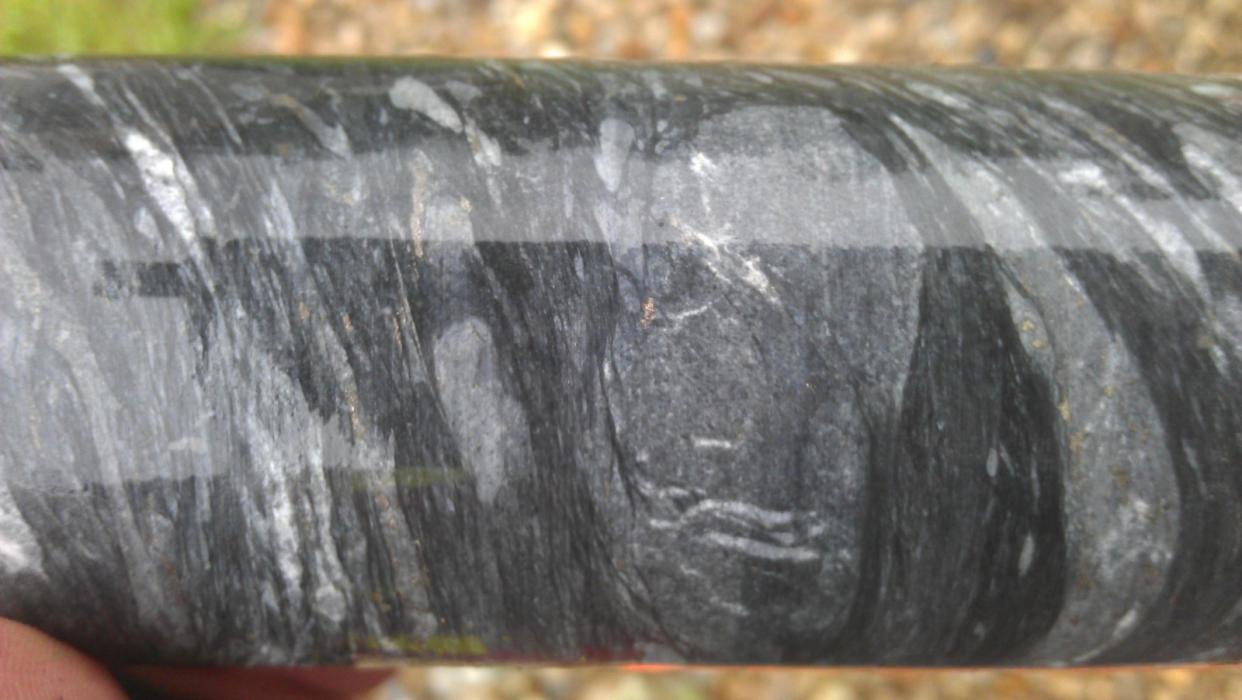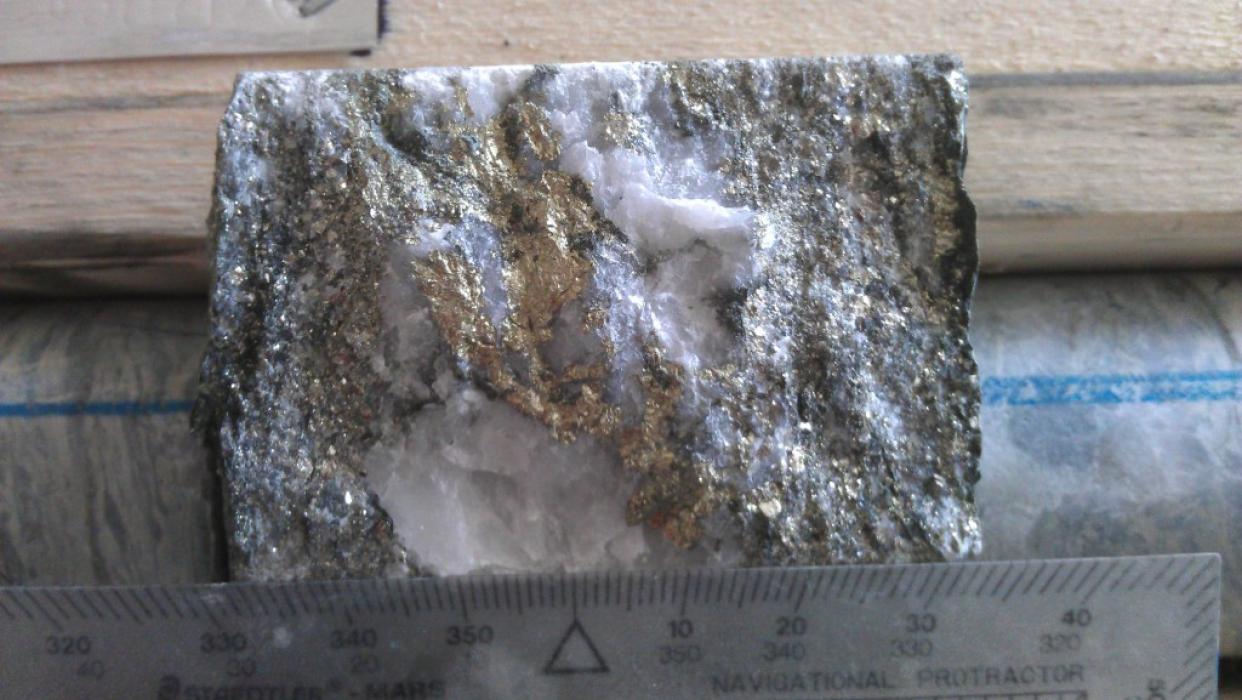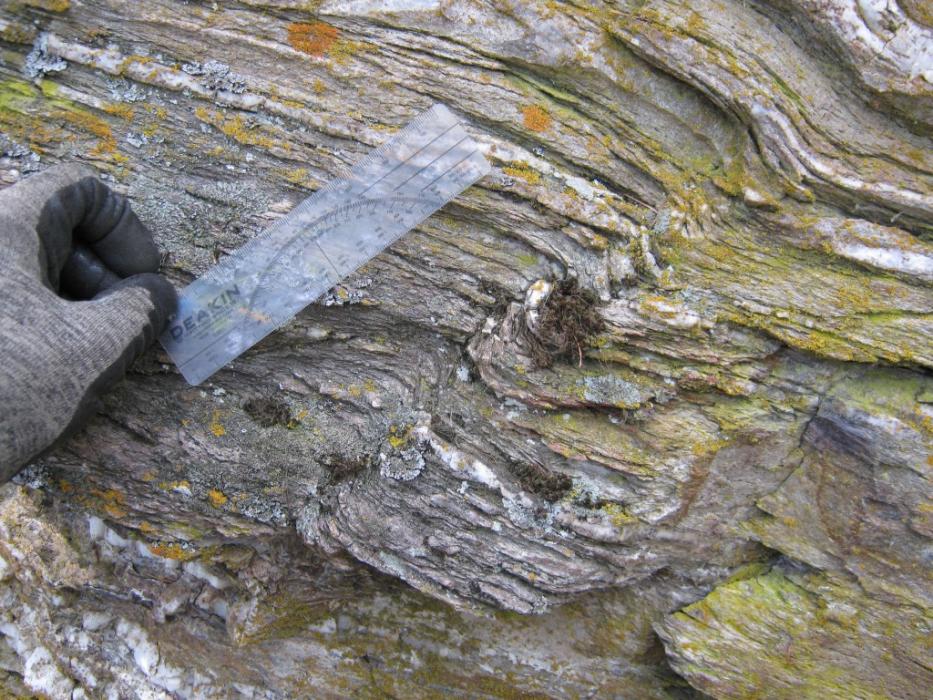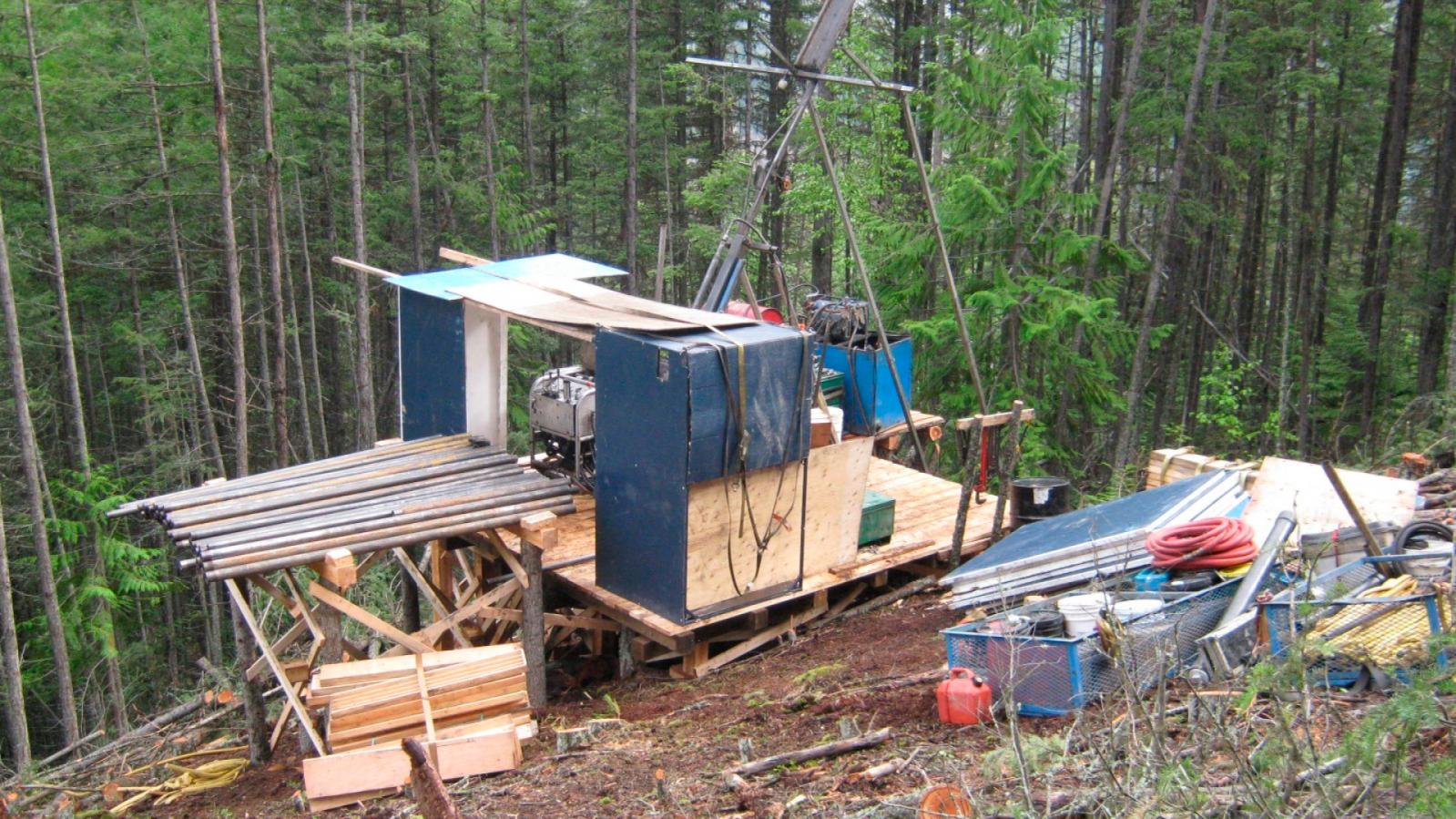
Acacia Project
The 4385ha Acacia Project is located 60 km NE of Kamloops, BC. Acquired in 1999 for Volcanogenic Massive Sulphide (“VMS”) deposit potential, it covers a stratigraphic package that hosts a number of base- and precious-metal deposits. The project is 100% owned by Eagle Plains with a 2% NSR held by Eagle Royalties containing a 1% buy-back clause.
-
- British Columbia
-
- Available for option: Yes
-
- Gold,
- Silver,
- Lead,
- Zinc,
- Copper
Project Highlights
- Adjacent to the past producing Homestake and Samatosum Mines
- Numerous high-grade showings, geochemical and geophysical anomalies
- Excellent geology/alteration favorable for polymetallic VMS deposits
- Excellent infrastructure including numerous forestry roads and nearby hydro & rail
- Encouraging exploration to date
Summary
The 4385 ha Acacia Project is located 60 km NE of Kamloops, BC. Acquired in 1999 for Volcanogenic Massive Sulphide (“VMS”) deposit potential, it covers a stratigraphic package that hosts a number of base- and precious-metal deposits. The property is accessible via a network of all-weather logging and historical roads and is 100% owned by Eagle Plains with a 2% NSR held by Eagle Royalties containing a 1% buy-back clause
Project Highlights
- Adjacent to the past producing Homestake and Samatosum Mines
- Numerous high-grade showings, geochemical and geophysical anomalies
- Excellent geology/alteration favorable for polymetallic VMS deposits
- Excellent infrastructure including numerous forestry roads and nearby hydro & rail
- Encouraging exploration to date
Geology
The property is underlain by sedimentary and volcanic rocks intruded by granite. Target mineralization are VMS deposits within the Eagle Bay Assemblage.
Exploration History
The Acacia is adjacent to the historic Homestake Mine where production occurred sporadically from 1893. Exploration at the Acacia has identified well-developed property-wide mineralization, alteration, geochemical and geophysical anomalies.
| Deposit | Tonnage and Grade |
| Homestake Mine | 249,906 t grading 226 g/t Ag, 36.7% Ba, 0.28% Cu, 1.24% Pb, 2.19% Zn and 0.58 g/t Au |
Rea Gold and Samatosum VMS lenses and vein deposits are located outside the Acacia claims. These mineralized trends are traced over several km’s of strike to the Acacia Property.
| Deposit | Tonnage and Grade |
| Rea Deposits | 242,000 t grading 6.5 g/t Au, 73 g/t Ag and 4% Pb-Zn, and |
| 133,000 t grading 5.4 g/t Au, 62 g/t Ag and 5% Pb-Zn | |
| Samatosum Mine | 353,129 t grading 1.8 g/t Au, 1,215 g/t Ag, 1% Cu, 4.1 Pb-Zn |
1987 to 1988 - Esso Minerals conducts soil sampling, mapping and ground VLF geophysical surveys and discovers the Acacia and Twin Mountain showings. These showings consist of at least eight massive sulphide and vein occurrences.
2000 to Present - Eagle Plains conducts prospecting, mapping, geochemical sampling and a geophysical survey that identified multiple targets. Drilling at the Acacia zone in 2012 tested coincident geochemical and geophysical anomalies associated with 8 massive sulphide showings encountering VMS alteration in all 6 holes and a 40 cm massive sulphide intercept in one hole. The degree and extent of alteration found is indicative of a large mineralizing system.
Mineralized Zones
The property hosts the Twin Mountain and Acacia Zones.
Mineralization at the Twin Mountain Zone is hosted in a vein system with a strike length of 4km and widths to 10m with anomalous gold, silver, zinc and lead values along strike of the known occurrences. In 2017, a compilation of 80 years of exploration data indicates that approximately 1.8 km of fertile stratigraphy remains relatively untested in the Twin Mountain Zone area which was being vectored in on from both the north and south by two senior companies prior to the industry decline of the 1990s. This area will be the focus of future exploration programs.
The Acacia Zone consists of eight known sulphide mineral occurrences over 1.6 by 1.2 km containing extensive alteration packages associated with VMS deposits. Rock samples from this zone have returned up to 191.3 g/t Ag, 0.8% Cu, 22% Pb and 6.7% Zn.
Future Work
Further exploration is planned for the property including:
- Prioritization of areas requiring additional ground-based exploration
- Incorporation of airborne geophysical data with updated geological and geochemical information
- In-fill geological, geochemical and geophysical surveys in the Twin Mountain Zone area
- Diamond-drilling to test high priority targets
Eagle Plains - A Project Generator
Eagle Plains Resources is a project generator with several mineral exploration properties of merit that meet qualifying transaction requirements. We facilitate the listing process for capital pool companies and initial public offerings while providing technical expertise for exploration programs. Companies interested in co-operatively exploring any of our projects please contact: Chuck Downie at ccd@eagleplains.com or Mike Labach at mgl@eagleplains.com or call 1 866 Hunt Ore (486 8673).
The Acacia project is currently unavailable for option.
Details
The Acacia Property is located on the Adams Plateau area of British Columbia, approximately 60 km NE of Kamloops and 22 km east of the town of Barriere. The 4385 ha property was staked by Eagle Plains in 1999 covering a fertile stratigraphic package that hosts a number of base- and precious-metal deposits. The project is 100% owned by Eagle Plains with a 2% NSR held by Eagle Royalties containing a 1% buy-back clause. Access is by a network of all-weather logging and historical roads.
Work by past operators on the Acacia Property has identified well-developed volcanogenic massive sulphide (“VMS”) mineralization and alteration hosted by the Lower Cambrian to Devono-Mississippian Eagle Bay Formation, the property has high potential for hosting VMS-style deposits.
Project Highlights
- Adjacent to the past producing Homestake and Samatosum Mines
- Numerous high-grade showings, geochemical and geophysical anomalies
- Excellent geology/alteration favorable for polymetallic VMS deposits
- Excellent infrastructure including numerous forestry roads and nearby hydro & rail
- Encouraging exploration to date
Geology
The Adams Plateau area is underlain by metavolcanic and metasedimentary rocks of the Eagle Bay Assemblage of the Kootenay Terrane. The Kootenay Terrane and correlative rocks of the Yukon-Tanana Terrane farther north comprise dominantly Paleozoic sedimentary and volcanic rocks that are inferred to have been deposited on the distal western edge of ancestral North America.
The Eagle Bay assemblage comprises Lower Cambrian to Mississippian rocks that are intruded by Late Devonian orthogneiss and Jurassic-Cretaceous granodiorite and quartz monzonite of the Raft and Baldy batholiths. Within the Acacia Property area the Eagle Bay Assemblage is contained within four west directed fault slices. The assemblage consists of clastic metasedimentary rocks, mafic metavolcanic rocks and limestone and structurally overlying clastic metasedimentary rocks, with minor carbonate and volcanic rocks, all of which are interpreted to be Cambrian in age. These are in turn overlain by Devonian-Mississippian mafic to intermediate metavolcanic and metasedimentary rocks.
Exploration History
The central part of the Acacia Property borders the historic Homestake Mine Crown Grants, which have undergone sporadic exploration and production by various operators since 1893. Exploration peripheral to the Homestake deposit by a host of companies since the mid 1970s has identified well-developed volcanogenic massive sulphide mineralization and alteration within the property wide Lower Cambrian to Devono-Mississippian Eagle Bay Assemblage.
| Deposit | Tonnage and Grade |
| Homestake Mine | 249,906 t grading 0.6 g/t Au, 226 g/t Ag, 36.7% Ba, 0.28% Cu, 1.24% Pb, 2.19% Zn and 0.58 g/t Au |
In 1987 Esso Minerals discovered the centrally positioned historic Acacia area showings. These showings consist of at least eight massive sulphide and vein occurrences. The following year Esso Minerals conducted grid soil sampling, mapping and ground VLF geophysical surveying. Exploration to the north of the Twin Mountain zone in 1983 and 1986, outside of the current project boundaries, resulted in the following discoveries of volcanogenic massive sulphide lenses and vein deposits:
| Deposit | Tonnage and Grade |
| Rea Deposits | 242,000 t grading 6.5 g/t Au, 73 g/t Ag and 4% Pb-Zn, and |
| 133,000 t grading 5.4 g/t Au, 62 g/t Ag and 5% Pb-Zn | |
| Samatosum Mine | 353,129 t grading 1.8 g/t Au, 1,215 g/t Ag, 1% Cu, 4.1 Pb-Zn |
| K7 Lens | 375,000 tonnes grading 4 g/t Au, 55 g/t Ag, 0.5 % Cu, 4.8 % Pb, 6.1% Zn |
Subsequent exploration programs by Esso Minerals and Homestake successfully traced the Rea and Samatosum mineralized trends southeasterly over kms of strike length. The Acacia Property covers the inferred strike extension at the Twin Mountain zone area.
Mineralized Zones
Acacia Zone
The Acacia Zone consists of eight known sulphide mineralization occurrences over an area 1.6 km by 1.2 km. Work within this zone defined extensive alteration packages that are associated with VMS deposits, these are coincident with geochemical anomalies for Cu, Pb, Zn and Ag within a zone 1.5 km by 0.25 km where grab sampling returned up to 191.3 g/t Ag, 0.8% Cu, 22% Pb and 6.7% Zn. Drill results from 2012 include an intercept of 40cm of VMS.
Twin Mountain Zone
The Twin Mountain zone consists of a system of mineralized veins dipping to the northeast. The veins range up to several meters thick with some containing VMS style mineralization of disseminated to massive pods of galena and sphalerite up to 30 cm wide.
Historical workings include two adits that extend to a depth of greater than 50 m, a number of trenches and geochemical surveys that have identified anomalous signatures for silver, zinc and lead along strike to the northwest and southeast of the known occurrences. Samples taken from trenches across the mineralized vein returned values ranging from trace to 0.6 m @ 15.5 g/t Au, 9.3 g/t Ag, 0.84% Pb and 3.7% Zn.
Eagle Plains Exploration
The Acacia zone showings were the focus of work in 2000 and consisted of contour and grid soil geochemical surveys. The results outlined anomalous base-metal signatures proximal to and on trend with the linear trace of historic adits and mineral occurrences.
Ground-based exploration programs completed by Eagle Plains and partners in 2007, 2008 and 2010 consisted of prospecting, geological mapping, geochemical sampling and a geophysical survey that identified a number of targets as potential intrusions, mineralization and structures.
In 2012, a 6 hole - 616 m drill program tested an area of the Acacia Zone containing 8 massive sulphide showings and a large multi-element soil geochemical anomaly associated with a magnetic geophysical anomaly. Although drilling did not intersect mineralization economic in scale, the results are very encouraging. The degree and extent of alteration found, including chlorite, epidote, silica and sericite, all typical of VMS deposits, is indicative of a large mineralizing system. Alteration was encountered in all of the holes indicating the presence of a widespread metal-bearing fluid system. A 40 cm interval of massive pyrrhotite and pyrite found in hole 6 is further evidence of this system.
2017 Data Compilation
During the 80s and 90s operators including Homestake and Esso (in the north) and Falconbridge (in the south) were exploring to define base- and precious-metal resources along strike from the Samatosum Mine site. Working independently, they were successful in tracing the Rea and Samatosum mineralized trends over multiple kms of strike length from their respective tenures, ultimately vectoring toward the Twin Mountain Zone from both the north and south. Soon thereafter, exploration efforts ceased and claims were allowed to lapse during the industry downturn of the 1990s. Eagle Plains staked this and the Acacia Zone in 1999 and began a new era of exploration. Interpretation of 80 years of data collected by these and other operators, when compiled and assessed collectively, indicates that approximately 1.8 km of fertile stratigraphy along the Samoatosum strike remains to be drill tested in the Twin Mountain Zone area.
Future Work
The results of the 2017 data compilation indicate the Acacia Property remains a prospective area to host economic-scale VMS deposits. The following exploration work is recommended:
- Prioritization of areas requiring additional ground-based exploration
- Interpretation of the 2008 airborne geophysical data with updated geological and geochemical information
- In-fill geological, geochemical and geophysical surveys in the Twin Mountain Zone area
- Diamond-drilling to test high priority targets
Eagle Plains - A Project Generator
Eagle Plains Resources is a project generator with several mineral exploration properties of merit that meet qualifying transaction requirements. We facilitate the listing process for capital pool companies and initial public offerings while providing technical expertise for exploration programs. Companies interested in co-operatively exploring any of our projects please contact: Chuck Downie at ccd@eagleplains.com or Mike Labach at mgl@eagleplains.com or call 1 866 Hunt Ore (486 8673).
The Acacia project is currently available for option.
Updated October 8, 2025
